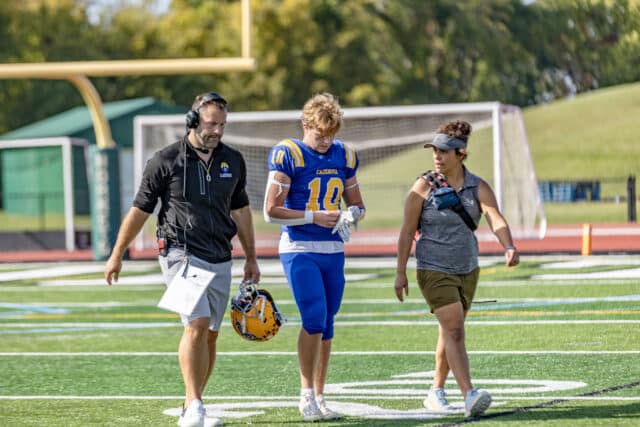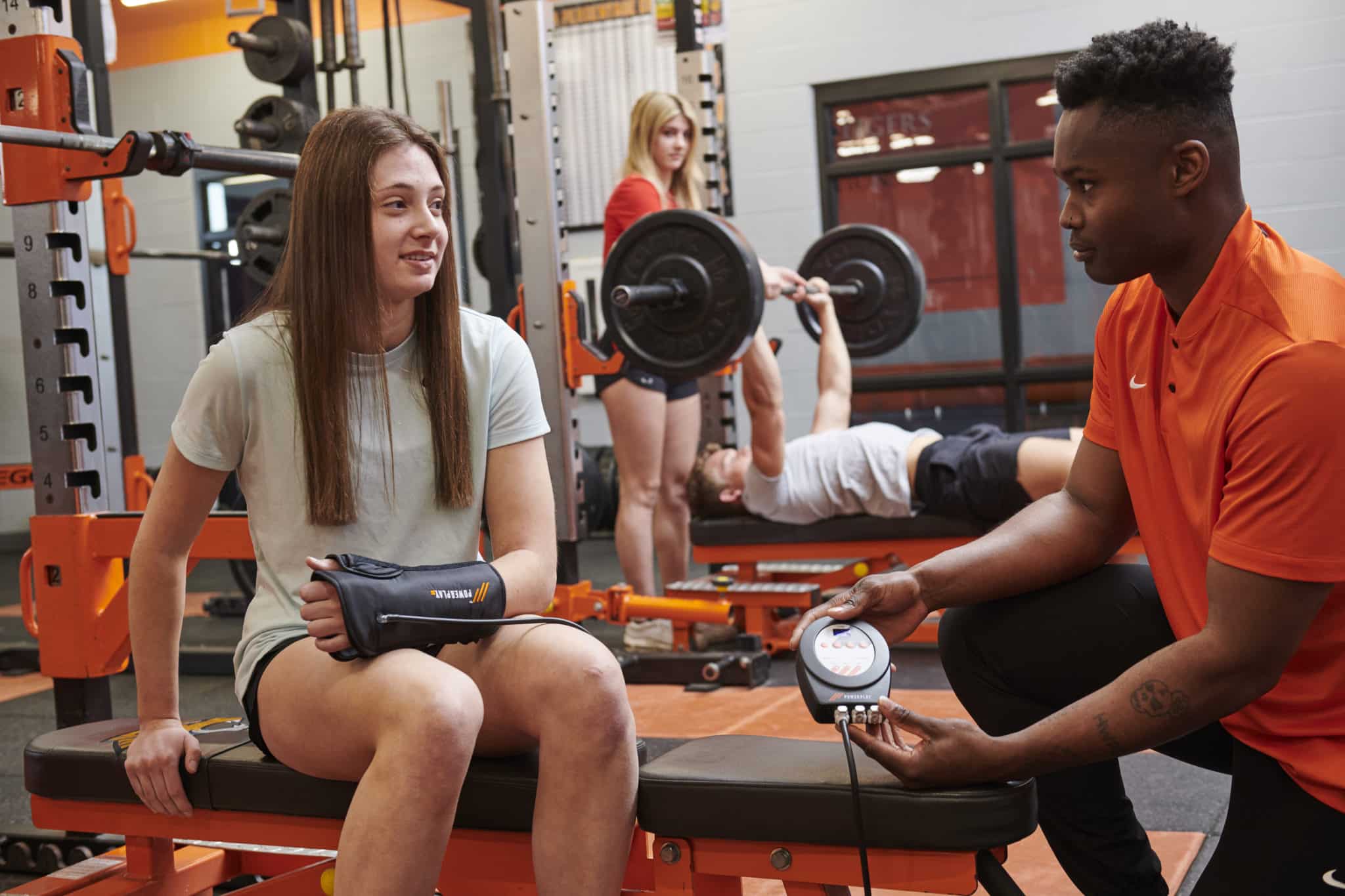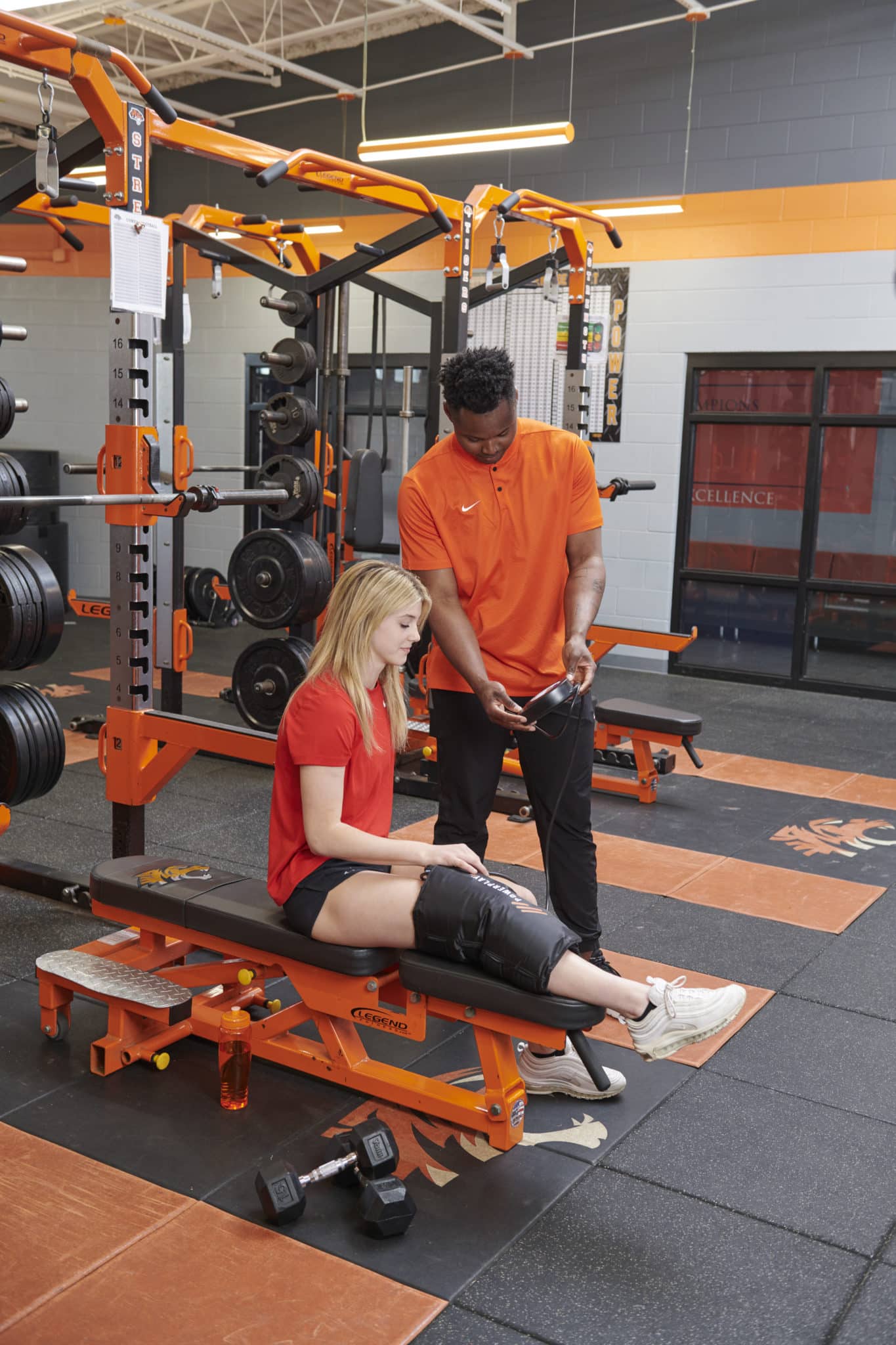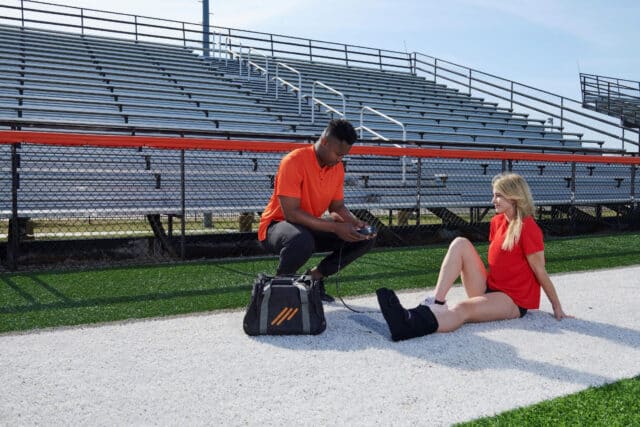There are few solutions that provide more immediate results after ACL surgery than cold compression therapy. Cold compression therapy is a respected, proven approach for reducing swelling after an injury. By applying cold compression, freshly oxygenated blood and vital nutrients are directed toward the damaged tissue, advancing the body’s healing process.
Cold compression therapy in the form of cold compression knee wraps provides the ideal treatment. Case studies of post-ACL surgery patients show that cold compression therapy can reduce recovery time from ACL and other surgeries by about a month, compared to standard treatments.

This reduction in recovery time can make an enormous difference for athletes attempting to recover under a time constraint.
Benefits of Cold Compression Therapy After ACL Surgery
Some of the documented and peer-reviewed benefits of cold compression therapy for knee and ACL surgery include:
- Improved, short-term pain relief (Journal of Knee Surgery, 2012)
- Faster recovery of ROM, strength, and neuromuscular control (International Conference on Sports Rehabilitation, 2011 Presentation)
- Significantly decreased swelling (Knee Surgery, Sports Traumatology, Arthroscopy, 1994)
- Improved range of motion in knee (Orthopaedics & Traumatology: Surgery & Research, 2014)
- Reduced narcotics dependency (Journal of Knee Surgery, 2012)
These studies also show that cold and compression therapy together is more effective than cold therapy alone.
Cold compression therapy works so well because active compression forces swelling out of the injured area and directs it toward the body’s core. As documented in a 1998 study in the Journal of Sports Medicine, the combination of cold and pressure significantly increases lymph flow. Ultimately, this helps increase blood flow and oxygen to the recovering area.
When to Use a Cold Compression ACL Wrap

Cold compression therapy can be used immediately after an injury to limit the amount of swelling and help an athlete move into surgery more quickly. Once ACL surgery is complete, the body will begin a natural recovery immediately. In the first few days after surgery, a patient will begin regaining motion in their knee. This period of recovery is often the most painful, although this is the optimal time for cold and compression therapy.
During this stage, the swelling of the knee is heightened and there is a decreased blood flow to the injured area. The body will begin taking natural steps to decrease inflammation, but without the addition of cold compression therapy the reduction in swelling may take more time. Once an athlete has initiated cold compression therapy, they should begin to see results, including reduced swelling, within the first few days.
Healing from an ACL tear takes time. The initial recovery period is challenging and tiresome. For those committed to their physical therapy and healing process, deciding to use cold compression therapy can reduce the amount of time spent immobile. This is especially true for athletes striving to recover before a certain event or competition.

How To Use PowerPlay’s Cold Compression Knee Wrap
If you’re using the PowerPlay 360 knee wrap to help recover from ACL surgery, you can easily use it at home or anywhere you’re receiving treatment. Equipped with the pump, knee wrap, and gel packs, you just need a fridge or ice chest to cool the cold therapy gel packs.
The portable cold therapy unit from PowerPlay is designed to deliver intermittent compression. This means the compression pump inflates the wrap to the desired pressure, holds for 10 seconds, releases, then inflates again.
To use your cold compression device, insert the cooled gel packs into the compression sleeve, and wrap the compression sleeve around your knee. Set the unit to the desired pressure and begin your therapy.
Continue this process throughout the first week after surgery, or until the reduction in swelling is noticeable. Of course, it’s best to work with your doctor or physical therapist to monitor your recovery throughout the healing process.
When to Ice the Knee After ACL Surgery
What about using the more traditional ice or cold therapy without the compression? Cold therapy has many benefits, and it can certainly help reduce pain and swelling. This is especially important during the first few days after surgery. It’s recommended to ice your knee for 20 minutes at a time, 3-5 times a day.
Using an ACL surgery ice pack or frozen gel pack is a simple way to ice the knee. However, as we’ve already established, the combination of cold and compression therapy can be more effective and will help get an athlete back on their feet faster. A portable compression device like PowerPlay’s knee wrap is a convenient way to receive this treatment.
A Faster Road to Recovery
Tearing an ACL is a painful and inconvenient experience. With or without cold compression therapy, it takes a patient months to journey through the extensive process of surgery and recovery. That being said, cold compression therapy can make this long process significantly shorter and more comfortable. This ultimately allows you to get back to practicing and competing much more quickly.
If you’re an athlete suffering from a knee injury, give yourself an advantage by healing more quickly, with less need for harsh medications. Talk with your doctor or physical therapist to determine whether cold compression therapy is right for you, and put yourself in a position to recover as fast as possible.





